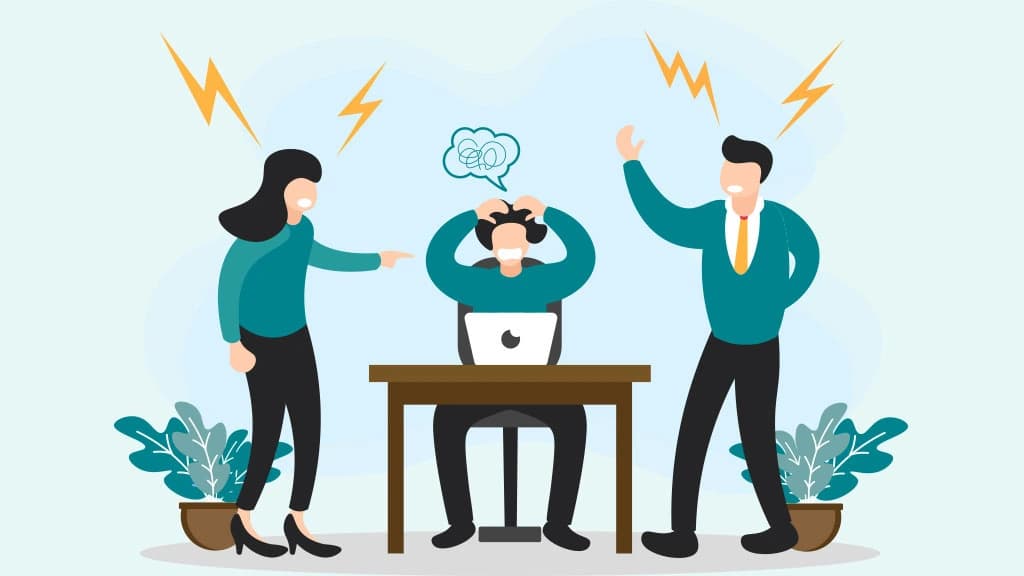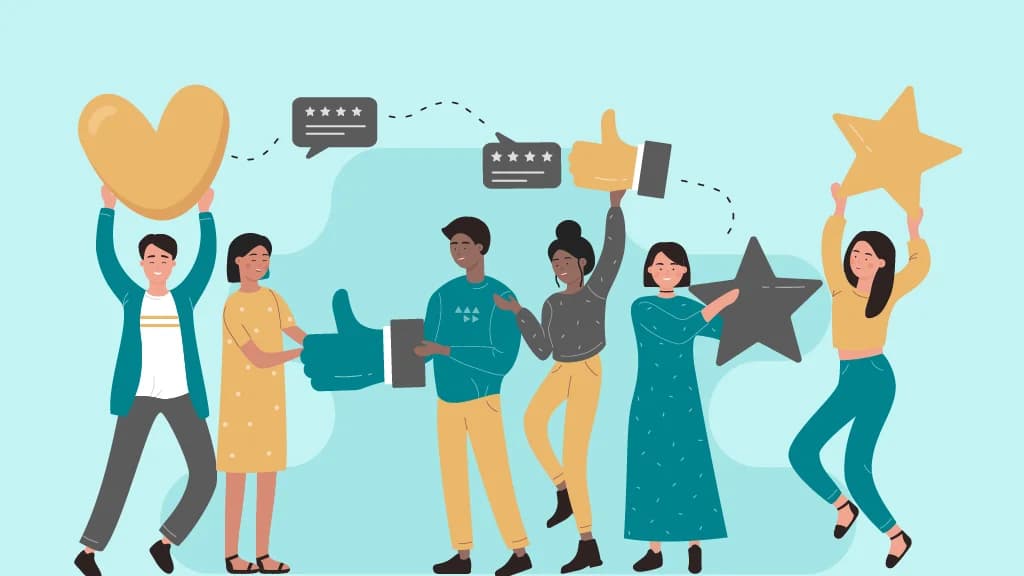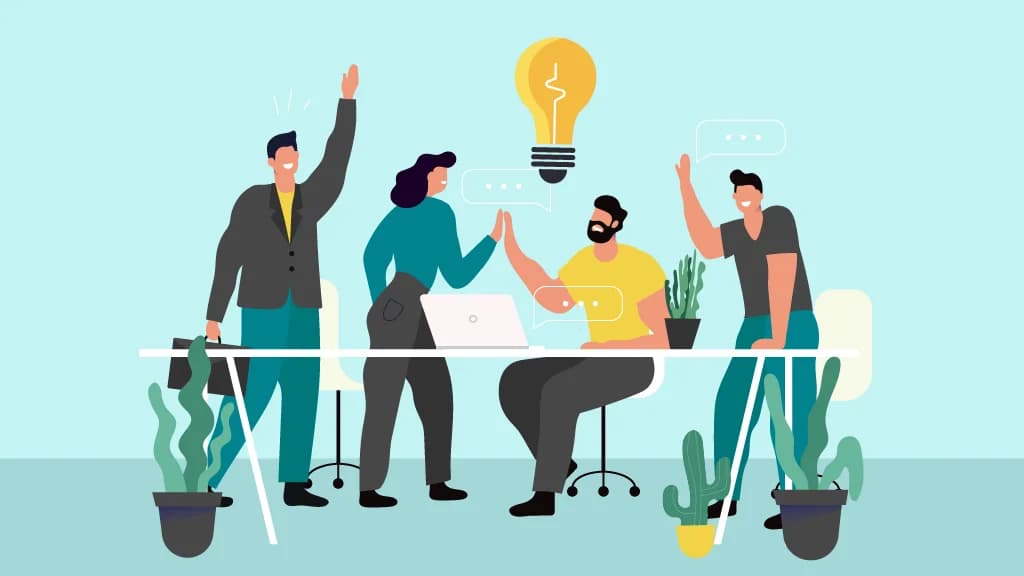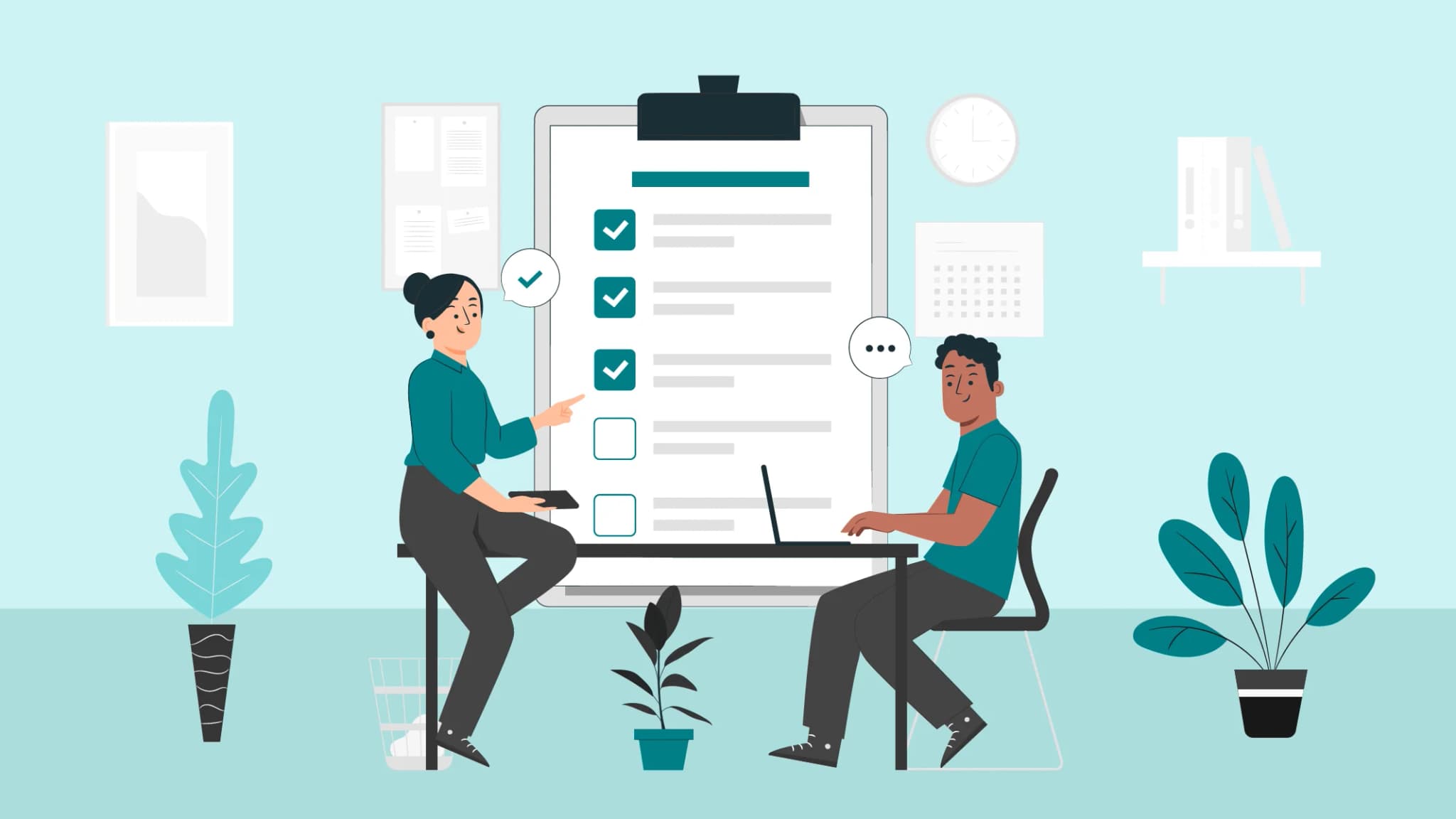
No matter how well a team gets along, conflicts are bound to happen. This is especially true in the fast-moving business world of today and remote work settings. Miscommunication, unclear expectations, and a lack of accountability can turn small issues into major roadblocks. But what if you could prevent many of these conflicts before they even start?
That’s where a working agreement comes in. By proactively addressing potential friction points, a team working agreement helps create a culture of respect, clarity, and teamwork. The use of artificial intelligence (AI)-powered engagement systems, such as AdvantageClub.ai, amplifies these benefits by encouraging increased transparency and incentive through real-time recognition and awards, resulting in a truly synergistic work environment. Let’s explore seven key ways a team working agreement can help prevent conflict and keep your team working efficiently.
The Foundation of a Working Agreement
A working agreement is a common commitment that controls how a team collaborates, communicates, and holds each other accountable. According to a Niagara Institute survey, 87.8% of respondents are willing to compromise to break an impasse, indicating a significant preference for resolution over long-term confrontation. Working agreements guarantee that everyone is on the same page. It prevents misunderstandings and keeps things running without a hitch.
So, what factors contribute to an effective working agreement?
- Defined Roles and obligations: When everyone understands their obligations, it is clear who is in charge of what. This prevents work from overlapping and slipping between the crevices.
- Communication Protocols: Setting expectations for response times, meeting etiquette, and preferred communication channels ensures that messages are not lost and that everyone stays informed.
- Decision-making Processes: Whether decisions are reached by consensus, voting, or a designated leader, having a clear protocol in place helps to avoid unnecessary fights and delays.
- Conflict Resolution Strategies: Disagreements are inevitable, but a structured approach—such as escalation steps or mediation options—helps resolve them quickly and fairly.
- Performance Expectations: Defining what success looks like ensures that everyone understands the standards for quality, deadlines, and deliverables.
By laying these foundations, a team working agreement helps create a more structured, efficient, and harmonious work environment.
Harmony at Work: How Working Agreements Prevent Conflict
Aligning Expectations with AI-Driven Insights
The management of expectations and performance can be challenging, particularly in a working environment that is so fast-paced. That’s where Advantage Pulse comes in. With real-time insights into team engagement and performance, managers can set realistic goals, track progress, and maintain accountability. According to a McKinsey survey, 78% of respondents said their organization had incorporated AI. The statistic indicates the power of AI which can be used to create and deploy structured agreements.
Here’s how integrating data-driven insights into a working agreement can benefit teams:
- Spotting roadblocks early: Identifying performance bottlenecks allows management to address issues before they escalate.
- Setting Clear, Achievable Goals: Data-driven analytics ensure that goals are reasonable and reflect past performance.
- Dashboards provide visibility into team accomplishments, making it easy to monitor progress and celebrate wins.
- Providing Timely Feedback: Instant feedback enables team members to make adjustments and continuously develop.
- Improving Team Alignment: A common understanding of goals promotes a better feeling of purpose and teamwork.
A working agreement combined with insights doesn’t just prevent conflict—it strengthens teamwork, keeps motivation high, and helps teams perform at their best.
Enhancing Accountability and Transparency
There’s less room for confusion or blame when roles and expectations are clear. Working agreements help teams establish responsibilities from the start, thus creating a sense of ownership and trust. AI improves transparency by tracking individual efforts and delivering immediate rewards for accomplishments.
Here’s how teams can strengthen accountability:
- Clear Task Delegation: Clearly allocated duties reduce misunderstandings and ensure that everyone understands their obligations.
- Transparent Performance Metrics: Measurable goals give a reasonable foundation for evaluating progress and providing feedback.
- Regular Team Check-Ins: Frequent meetings allow for updates, feedback, and early problem-solving.
- Real-Time Recognition and Rewards: Recognizing accomplishments as they occur encourages positive behavior and boosts morale.
- Accessible Progress Reports: Open access to performance data fosters trust and keeps everyone on track.
A working agreement with structured processes and regular recognition creates a team culture where accountability is second nature, and core values alignment becomes effortless.
Conflict Resolution Through Proactive Incentives
One of the most effective strategies to prevent arguments within a team is to acknowledge and commend positive behavior before any indication of conflict manifests itself. Employees are more inclined to collaborate well when they feel valued in the team. Advantage Recognition simplifies this process by offering an AI-driven employee recognition and rewards system for teams to acknowledge and reward contributions in real time. In fact, a discretionary effort study discovered that when each employee has an equal chance of receiving recognition for their efforts, they are 2.2 times more likely to exercise their discretionary muscles and go above and beyond their regular work. Here are some practical ways incentives can enhance teamwork:
- Peer-to-Peer Recognition: Encouraging colleagues to recognize one another fosters appreciation and develops team relationships.
- Performance-Based Bonuses: Tying awards to specific goals encourages team members to collaborate for shared achievement.
- Small Milestone Rewards: Celebrating progress with small incentives keeps motivation high along the way.
- Personalized Appreciation Messages: A simple, sincere thank you can go a long way toward making someone feel cherished.
- Gamification Elements: Adding entertaining challenges, medals, or leaderboards makes teamwork more engaging and rewarding.
By weaving recognition and incentives into daily team interactions, organizations can create a positive work culture where conflicts naturally decrease.
Personalization for Diverse Work Styles
Every team has a unique rhythm, and a rigid approach rarely works for everyone. When workers have the freedom to customize their work agreements, they feel more engaged and collaborate better. AI can help teams adjust their work structures to accommodate varied styles and preferences. In a Deloitte study, 30% of workers had severe workloads and occupational stress. Tailored work agreements can increase team satisfaction while also helping to prevent disagreements.
Here are some ways work agreements can become more adaptable:
- Flexible Work Schedules: Allowing employees to change their hours helps them balance their personal and professional responsibilities.
- Preferred Communication Methods: Some people thrive on rapid discussions, while others prefer emails—giving people options helps collaboration go smoothly.
- Clear Role Expectations: Defining performance criteria according to duties enables fair evaluations.
- Personalized Goal-Setting: Encouraging employees to set their own goals increases motivation and accountability.
- Meaningful Recognition: Tailoring rewards to individual preferences makes appreciation more impactful.
A little flexibility goes a long way. When work agreements reflect how people actually work best, teams become more productive, engaged, and connected.
The “Micro-Motivation” Strategy for Preventing Friction
Small, regular acknowledgments can have a big impact on team morale and conflict avoidance. By spotting early indicators of disengagement and making sure recognition occurs at the appropriate moment, AdvantageClub.ai assists businesses in making this process easier. According to a Deloitte study, 85% of professionals desire to hear “thank you” in their daily interactions. These micro-motivation strategies see lower turnover rates and stronger team cohesion.
Here’s how teams can use micro-motivation to maintain a positive work environment:
- Frequent Shout-Outs and Praise: A simple “Great job!” or public acknowledgment boosts morale and reinforces positive behavior.
- Small Bonuses for Task Completion: Rewarding timely task completion keeps teams accountable and engaged.
- Virtual Badges and Recognition Points: Offering small tokens of appreciation makes achievements feel more tangible.
- Customized Notes of Thank You: A sincere message can create relationships and make someone's day.
- Team Appreciation Events: Uniting people to celebrate successes fosters trust and togetherness.
When people receive frequent, meaningful, and timely recognition, they stay motivated, and teams work together more successfully.
Continuous Feedback Loop for Improvement
A working agreement isn’t set in stone—it should evolve with the team. Advantage Pulse helps teams gather real-time feedback and make meaningful adjustments, ensuring work agreements stay relevant. 72% of millennials want input on a daily or weekly basis. Employers should consider this when deciding how frequently to provide feedback.
Here’s how teams can establish a robust feedback loop:
- Regular Team Surveys: Conducting surveys helps evaluate team happiness and identify areas for development.
- One-on-One Feedback Sessions: Private interactions allow for open, honest exchanges about issues and triumphs.
- Anonymous Feedback Channels: Allowing anonymous input enables team members to express their problems without reservations.
- AI-Powered Sentiment Analysis: Using AI to detect patterns in feedback can help identify trends and solve concerns early on.
- Ongoing Updates to Work Agreements: Regularly revising agreements ensures that they match the current team demands and dynamics.
By making feedback an ongoing conversation, teams can improve collaboration, prevent misunderstandings, and create a more adaptable work environment.
Building Psychological Safety and Trust
When employees feel encouraged to speak up, share ideas, and express concerns, teamwork improves, and conflicts are reduced. A well-defined working agreement creates confidence by outlining clear expectations. Advantage Recognition helps to achieve this by ensuring that employees feel valued through meaningful acknowledgment. An American Psychological Association study reveals that 92% of employees in the US expect their employer to prioritize their emotional and psychological well-being and give the necessary support.
Here’s how organizations can prioritize psychological safety in the workplace:
- Encourage Open Dialogue: Create a workplace where staff members discuss their thoughts and concerns without any concerns.
- Active Listening: Empathy and careful listening can help to strengthen trust and team ties.
- Foster Safe Spaces for Idea Sharing: Encourage open brainstorming sessions in which all ideas are welcome.
- Organize Team-Building Activities: Strengthen relationships through frequent activities that encourage togetherness.
- Recognize Individual Contributions: Acknowledge and appreciate each individual's work to foster a sense of belonging.
Trust and appreciation build a workforce that feels heard, respected, and encouraged to perform at their best.
Tips for Implementing a Working Agreement
Working agreements decrease misunderstandings and align people around common aims. They enable teams to interact effectively and harmoniously. To be successful, careful preparation and ongoing reinforcement are essential.
Best Practices for Implementation
- Get Everyone Involved: Encourage open discussions to ensure that everyone is on board. A working agreement should address the team's needs.
- Set Clear Goals and Expectations: To ensure effective teamwork, clearly identify roles, duties, and expectations. Ambiguity often leads to misunderstanding.
- Review and update the agreement: Assess and amend your agreements on a regular basis as your team grows and evolves. Schedule regular check-ins to keep it relevant.
- Use Data for Smarter Decisions: Platforms like AdvantageClub.ai provide insights that help teams understand engagement trends, spot challenges, and improve collaboration.
- Create a Feedback Loop: Regular check-ins help assess what’s working and what needs adjustment. Open conversations make the agreement stronger over time.
- Communicate Its Value: A working agreement is only effective when individuals follow it. Show how it promotes teamwork, reduces conflict, and increases production.
- Ensure Leadership Support: To encourage team-wide acceptance, leaders should model the agreement's values and aggressively emphasize its importance.
Measuring Success and Scaling the Agreement
A working agreement is only as effective as the results it delivers. Tracking key performance metrics helps teams see what’s working and make improvements where needed. AI platforms offer analytics that help managers assess engagement levels, collaboration patterns, and how well conflicts are being addressed.
Key Metrics to Monitor
- Employee Satisfaction Scores: Determine morale and alignment with the agreement's principles.
- Conflict Resolution Rates: Monitor advances in communication and teamwork.
- Productivity Levels: Determine how collaboration affects efficiency and performance.
- Team Retention Rates: A solid agreement produces a cohesive, engaged group, resulting in lower turnover.
- Recognition and Reward Engagement: Monitor how often employees acknowledge and appreciate each other’s efforts.
The Future of Working Agreements with AI Integration
Working agreements, like workplaces, should evolve with time. Digital solutions such as AdvantageClub.ai enable teams to fine-tune their agreements based on real-time data, encouraging a more collaborative and engaged workforce.
Future trends to watch:
- Better Insight into Team Morale: Advanced technologies will assist managers in detecting changes in team sentiment, allowing them to address issues early.
- Predicting and Preventing Conflicts: Data-driven insights can assist teams in identifying potential difficulties before they erupt.
- Personalized Recognition Programs: Customizable rewards and recognition schemes for employees will keep them motivated and engaged.
- Stronger Remote Collaboration: Working agreements will be more tightly aligned with digital tools, ensuring smooth teamwork whether in person or virtually.
- Continuous Learning and Adaptation: Real-time feedback mechanisms will ensure that agreements remain relevant and effective.
A well-written working agreement is not a one-time exercise; it is a live contract that evolves along with the team.
Towards a Conflict-Free Workplace
When minor confrontations are neglected, they can snowball into major conflicts. Conflicts at the workplace damage morale and impede teamwork. Resolving workplace issues swiftly contributes to team productivity and engagement. That is why having a clear working agreement in place, as well as the necessary tools, can make a huge impact.
AdvantageClub.ai can analyze team interactions and comments and discover possible difficulties early on. This enables managers to intervene before problems escalate. Furthermore, AI encourages open communication and equitable recognition, thus fostering a culture of trust and psychological safety.
Organizations can utilize these strategies not just to eliminate conflict but also to develop a more engaged and resilient workforce, ensuring long-term success.






